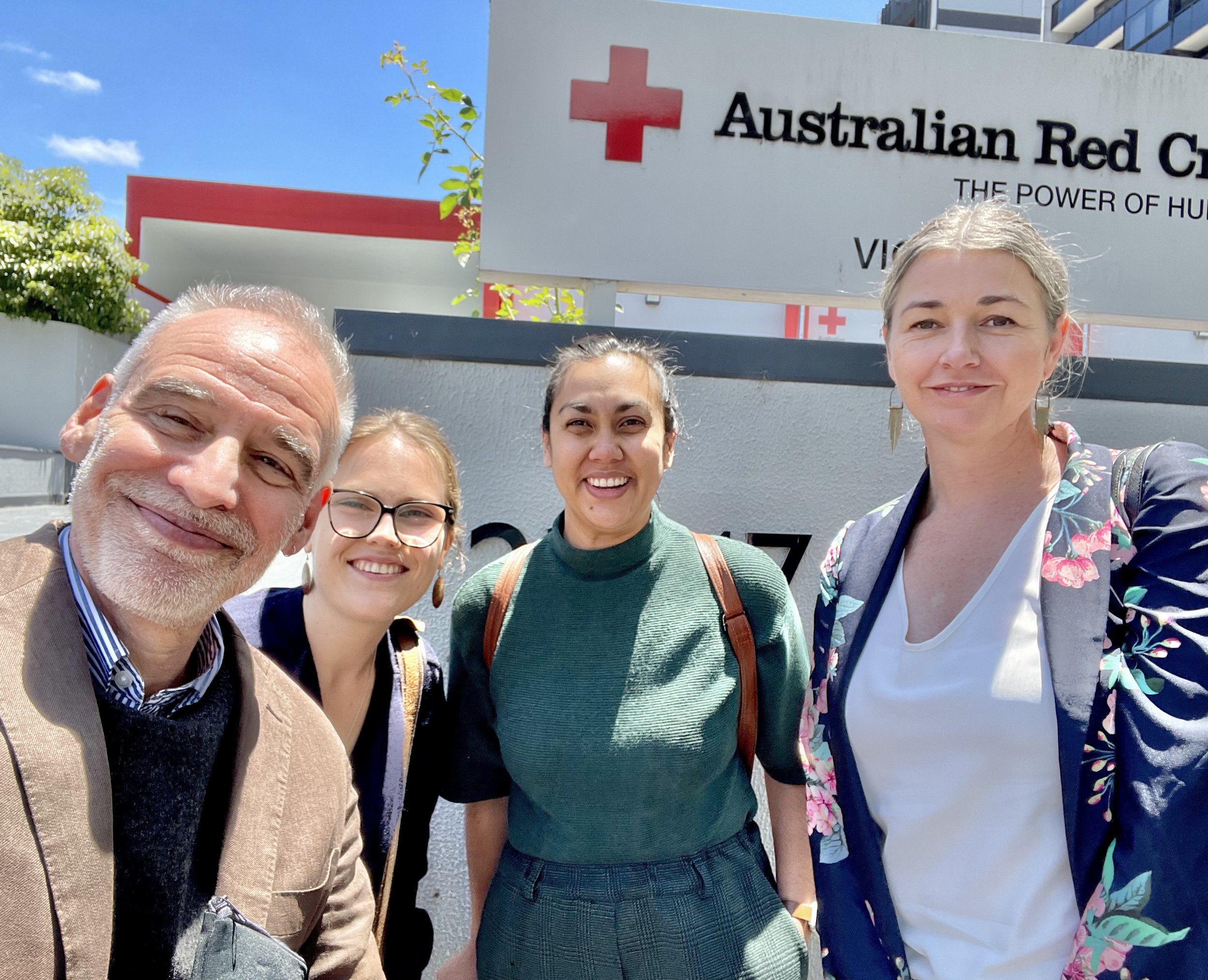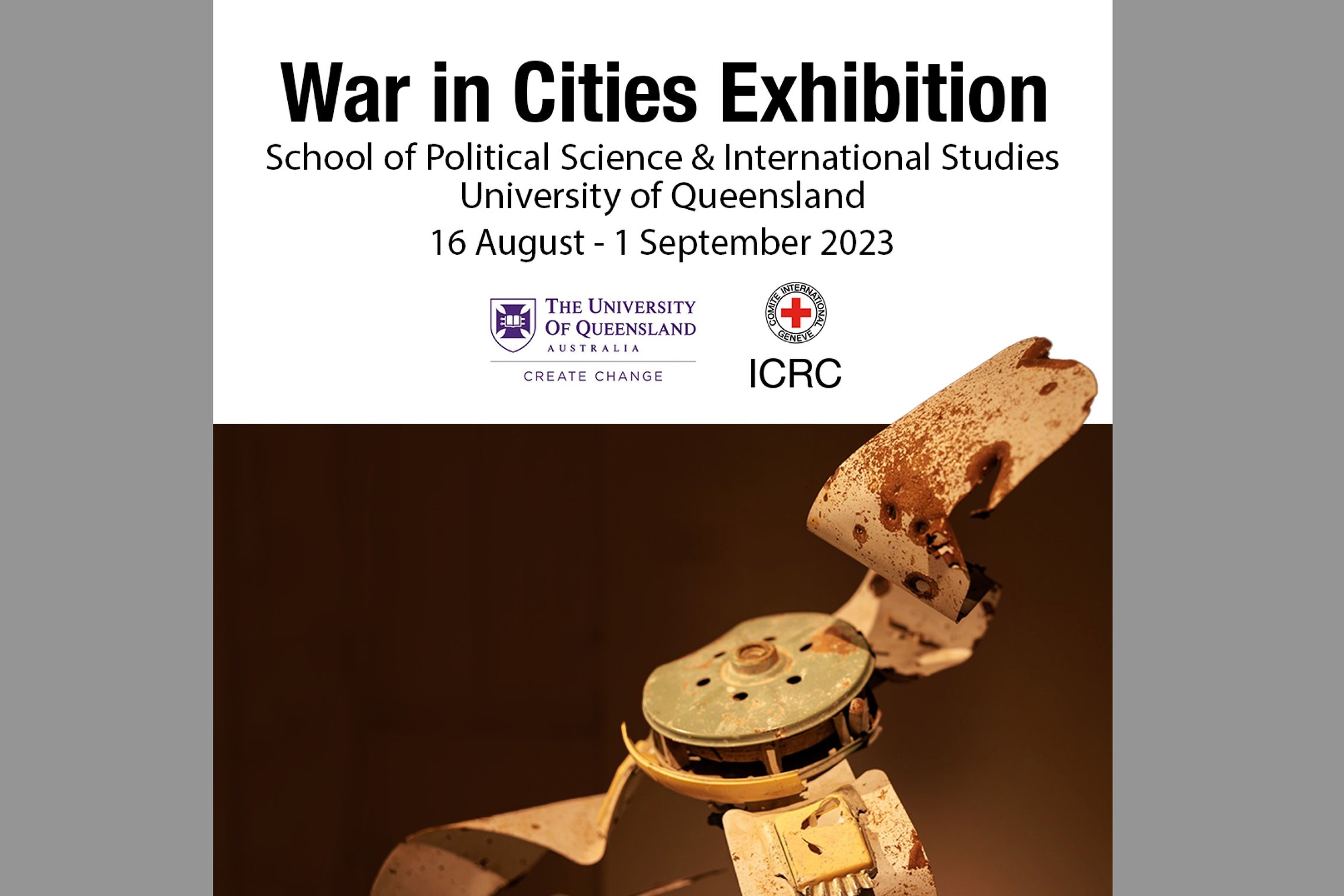Visualising Humanitarian Crises: Transforming Images and Aid Policy
Funded by a Linkage Grant from the Australian Research Council (2023 to 2027), this project involves eight chief and partner investigators: Roland Bleiker, Emma Hutchison, Cassandra Chapman, Matthew Hornsey, Bina D’Costa, Sana Nakata, David Campbell and Fiona Terry; over a dozen Ph.D. scholars, research officers, affiliated researchers and photographers as well as four Partner Organisations that are at the forefront of humanitarian and photojournalistic work: The World Press Photo Foundation, the International Committee of the Red Cross, the Australian Red Cross and Médecins Sans Frontières.
The aim of the project is to draw on the power of images to transform practices of aid. Prevailing visualisations of humanitarian crises are powerful but problematic. They often focus on violent events, suggesting that we are overwhelmed by problems and unable to find solutions. Add to this that crisis imagery tends to portray victims in the Global South in stereotypical ways, as passive and dependent on Western help. Doing so reinforces hierarchical power relations and can undermine policy initiatives that seek to develop local capabilities, build autonomy and value non-Western ways of being.
Solutions are not easy to find. Many humanitarian organisations are conscious of existing problems but they also know that stereotypical images of suffering victims generate compassion in Western viewers and are effective fundraising tools.
The project addresses these challenges by developing – and testing - alternative visual strategies that depict humanitarian crises in ways that encourage compassion for victims without entrenching problematic stereotypes. Expected outcomes include both scholarly contributions and new best practice guidelines that better equip humanitarian organisations to help people in need and contribute to enduring political solutions.
-
The aim of the first research phase (2023-6) is to develop new photographic practices that depict humanitarian crises in ways that encourage compassion for victims without entrenching problematic stereotypes. This phase is coordinated by Roland Bleiker, Emma Hutchison, Sana Nakata and David Campbell and involves over a dozen Ph.D. scholars, affiliated researchers and photographers. This phase contains various projects, including a case study on the Australian Red Cross’s move to strength base photography and collaborations between scholars and photographers aimed searching for innovative ways of visualising humanitarian issue beyond stereotypes. More information will become available at the projects progress.
-
The aim of the second phase (2024-6) is to empirically evaluate the impact of new visualisations on viewers, donors and political debates. Combining qualitative and quantitative methods can provide this phase will provide evidence-based data that reveals how viewers react to prevailing vs alternative images of crises. This phase is coordinated by Cassandra Chapman and Matthew Hornsey and involves several CIs, research officers, Ph.d. scholars and a postdoctoral fellow.
-
The third and final phase will apply conceptual and empirical findings to develop best practice guidelines that better equip humanitarian organisations to help people in need. This phase is coordinated by Roland Bleiker, Bina D’Costa and Fiona Terry and involves all other project participants. The ultimate goal is to harvest the power of images to overcome problematic stereotypes and develop practices of humanitarian assistance that not only provide aid but also visualise concrete solutions and help affected communities draw on their capacities to generate change.
Meet the Research Team
Our Partner Organisations
Yes is a World: My Tribute to Emma Hutchison
Associate Professor Emma Hutchison played a central role in this project from the very beginning. We conceptualised it together, wrote the grant proposal together and then advanced every single aspect together.
Emma passed away in November 2024. You can find my Tribute to Emma Hutchison here.
Even though Emma is no longer with us, her intellectual presence will remain a central part of this project and the various publications and policies reports that will emerge from it.
Project Publications
Exhibition: Towards Alternative Humanitarian Visuals? 24-28 March 2025 at the Australian National University. Photographs of ICRC campaigns curated in collaboration between UQ, ANU and the ICRC.
Alam, Shahidul and Roland Bleiker. 2024. “Photography: A Conversation between Shahidul Alam and Roland Bleiker,” in Caitlin Hamilton and Eliza Garnsey (eds), Creating Justice: Human Rights and Art in Conversation, pp. 147-69. Rowman and Littlefield.
Bleiker, Roland and Emma Hutchison. 2024. “Humanitarian Photography: From Mediating Suffering to Visualising Peace,” in Tom Allbeson, Pippa Oldfield and Jolyon Mitchell (eds), Picturing Peace: Photography, Conflict Transformation and Peacebuilding, pp. 17-28. London: Bloomsbury Press.
Bleiker, Roland and Emma Hutchison. Forthcoming. “Gender and Violence in News Media and Photography,” in Laura Shepherd, Caitlin Biddolph, Sian Perry and Jihyun Kim (eds), Handbook on Gender and Violence. Cheltenham: Edward Elgar, 2nd Edition.
Campbell, David and Roland Bleiker. 2024. “Poststructuralism,” in Tim Dunne, Steve Smith, Milja Kurki and Katarina Kušić (eds), Theories of International Relation, pp. 224-247. Oxford: Oxford University Press, 6th edition. (extensive case study on humanitarian visuals).
Bleiker, Roland. 2023. “Visualising International Relations: Challenges and Opportunities in an Emerging Research Field,” Journal of Visual Political Communication, 10(1): 17-25.
Bleiker, Roland. 2023. “Preface: Decolonising Visual Global Politics,” in Anastasia Veneti and Maria Rovisco (eds), Visual Politics in the Global South. Houndmills: Palgrave.
Bleiker, Roland and Emma Hutchison. 2023. “Art and Aesthetics,” in Laura Shepherd and Caitlin Hamilton (eds), Gender Matters in Global Politics: A Feminist Introduction to International Relations, pp. 94-108. London: Routledge.
Bleiker, Roland, Bronte Bratton and Emma Hutchison. 2023. “How do photos of our work make a difference?” The Australian Red Cross.
Bleiker, Roland, Bronte Bratton, Tiffany Hales, Emma Hutchison. 2023. “The Impact of Images: Insights from Experiments on the Identifiable Victim Effect,” VII Foundation Insider.
War in Cities Exhibition. 16 Aug – 1 Sept 2023, curated by Marwa Charmand, organised by the International Committee of the Red Cross, hosted by the Visual Politics Program and Rotary Peace Centre at the University of Queensland.
Hutchison, Emma and Roland Bleiker. 2022. “Visuality of Peace and Conflict,” in Oliver P. Richmond and Gëzim Visoka (eds), Oxford Handbook of Peacebuilding, State Building and Peace Formation, pp. 175-189. Oxford: Oxford University Press.
Bleiker, Roland. 2021. “Preface: Approaching the Complexities of Visual Global Politics,” in Nele Noesslent (ed), Visualized Narratives: Signs, Symbols and Political Mythology, pp. v-viii. Tectum Wissenschaftsverlag.
















